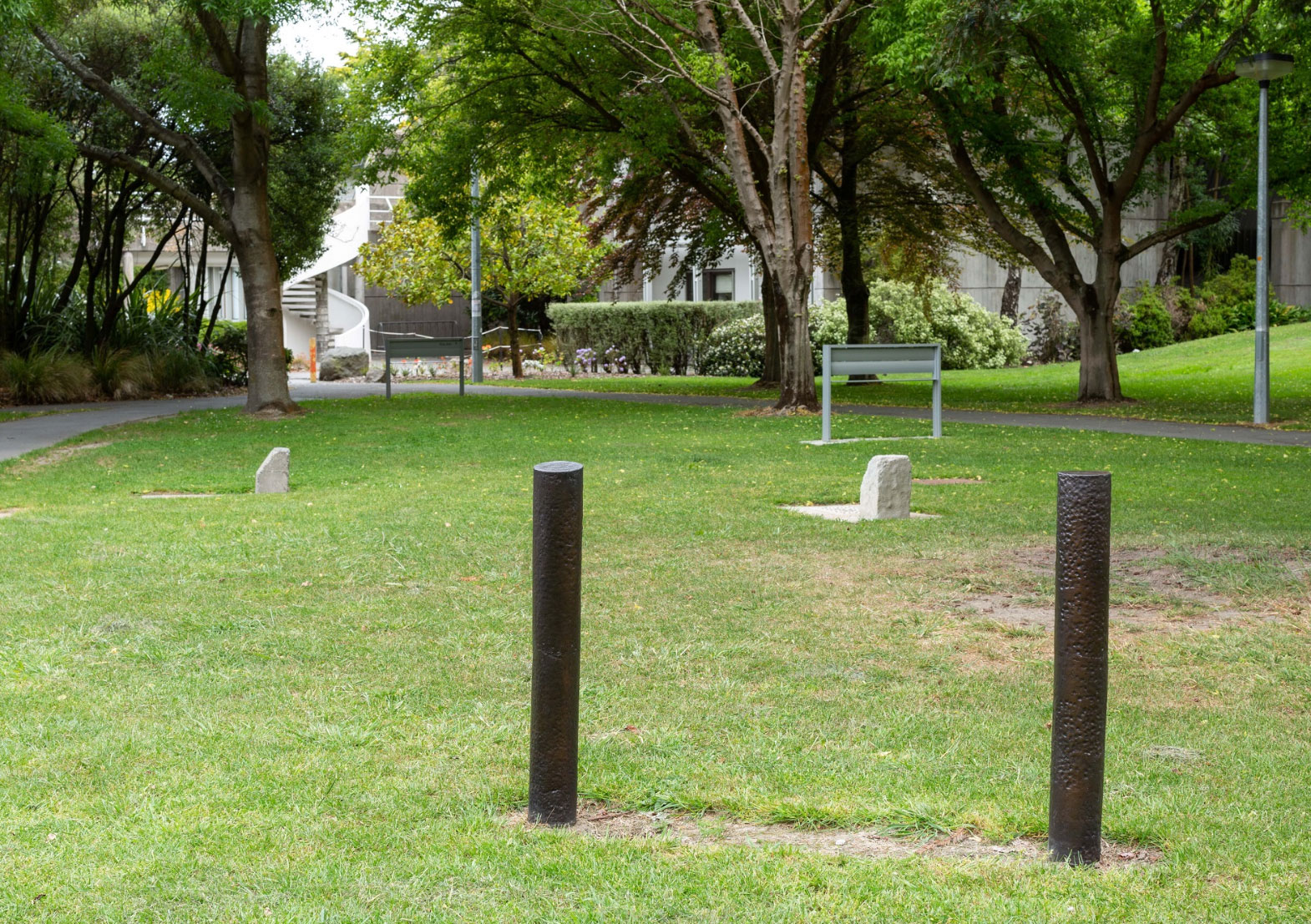2020 Grace Butler Memorial Foundation Award Recipient
Louise Palmer
Background:
My current research practice explores the intersection between sculptural conventions and the personal underpinnings of an artwork. I have drawn on sculptural approaches such as casting and site-specificity, which inform the work both materially and conceptually. It is through a reconsideration of tradition that the role of contemporary sculpture is explored; cast and reformed from residues of everyday life, recent sculptures and installations suggest a rethinking of the conventional meanings and values ascribed to objects and places.
Ongoing research draws on an experimental consideration of traditional sculptural materials and techniques, and an innovative approach to making and re-presenting objects. Recycled materials and everyday forms are the starting point for an ongoing series of cast plaster, concrete, bronze and glass sculptures. In works such as Kiss, 2013 and Ghost Shadows, (Campus), 2017 everyday objects and forms are cast, reformed and repositioned. These objects perform acts of recycling as the prosaic everyday items are rendered strange and ambiguous through replication, reflection and repetition.
Site and place also inform works which are responsive to environment, referencing and intervening with existing architectures and surrounding landscape. My investigation into site and place in solo presentations of work such as Ghost Shadows, (Campus), 2017, 90 Canon, 2016 and Homeshow, 90 Canon, 2017 interrogate the conventions of exhibition practice by presenting major works in self-initiated projects that address the specificity of site and context. This interdisciplinary research practice is expanded to consider the role of the artist as curator as well as maker.
Summary:
“...to be lost is to be fully present, and to be fully present is to be capable of being in uncertainty and mystery. And one does not get lost but loses oneself, with the implication that it is a conscious choice, a chosen surrender...” ? Rebecca Solnit, A Field Guide to Getting Lost.
This quote from Rebecca Solnit resonates with me at a point in my artistic career when I long to ‘be lost’, to loose myself in the uncertainty of making as a means to discover my practice anew. As a teacher, I understand the value for any artist in time spent exploring materials and processes without necessarily having a defined outcome. This residency opportunity offers the ideal time and space for this.
After the successes of 90 Canon and Homeshow, 90 Canon, exhibitions which addressed the home as a site for reflection and action, I wish to remain responsive to personal promptings and events. By privileging the home as a site, the personal underpinnings of this research were explored, emphasising the significance of personal experience, memory and loss in relation to the larger social context. While this body of work gave primacy to the domestic space as material for research I intend to turn to the similarly fraught site of the body as material for new work.
Ongoing aspects of my practice-led research include; site-specific sculpture, smaller cast works from found objects in plaster and bronze, sculptural drawings, curatorial projects and writing of a personal and reflective nature. This residency opportunity would be used to reconsider and work through the points of convergence between these strands. These could be formal or conceptual with the resulting work envisaged as an object-based installation alongside drawings and a small publication.
Included in this application are recent drawings and sculptures, which alongside older work, suggest the direction this new body of work may take. Cast objects such as Kiss, Paired objects, glasses, as well as work in progress recombining perfume bottles into organ-like forms, evoke the type and kind of work I wish to get lost in. Drawings such as Tattoo Studies trace further ideas and directions to navigate. I’m interested in exploring glass further through casting, and extending from my use of bronze to other metals such as mirror-polished stainless steel. This vocabulary of objects and materials starts to build a portrait of sorts, the composite forms suggestive of the body and the relationships it performs; intimate fragmented and uncertain.
Although the place or site of this work is located with the body it is also grounded in Christchurch and its shifting built environment. Building materials collected from my house rebuild such as plywood, concrete and gib-board may be utilised in architectural and furniture-like support structures for smaller objects, acting to blur the boundaries between public and private space. As in past installations, I see this proposed body of work activating both physical and psychological spaces, reflecting on the personal to voice wider concerns around lived bodily experience. I will continue to draw on the work of female writers such as Rebecca Solnit, Chris Krauss and Maggie Nelson, writing which evokes ways of being and making that blurs boundaries between genre and makes porous the constructs and constraints of femininity.
I feel that since the seismic upheavals in Christchurch my artistic practice has taken a back seat to my responsibilities as a lecturer. I am committed to my practice as an artist and wish to establish myself in the New Zealand arts community and further afield. I see the time afforded by this award as ideal to focus on my sculptural practice and develop a new body of work. This would enable me to develop and capitalise on exhibition opportunities. I’m confident that I would continue to build and expand my practice adding to the legacy of Grace Butler alongside past and future awardees.
2020 Grace Butler Artist’s Residency Announced.
Gallery is loading. Please wait. Javascript will need to be enabled to view it.


